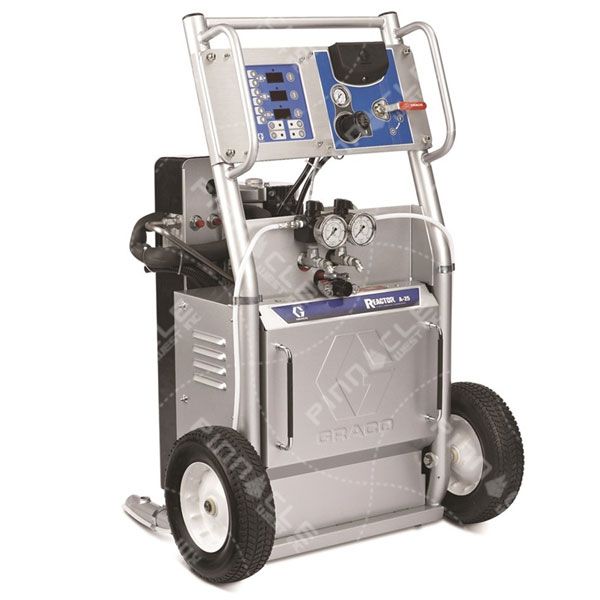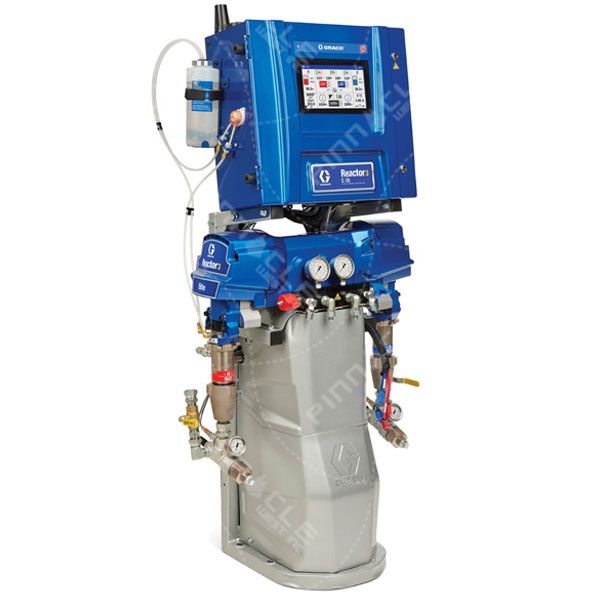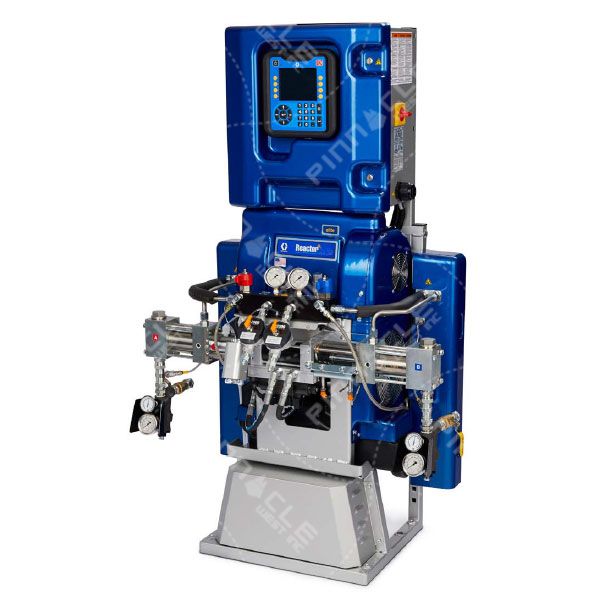CHOOSING THE RIGHT
SPF MACHINE |
| Among the biggest decisions facing spray foam operators that are looking to add-on or upgrade their equipment is which type of machine to purchase. Selecting the type of machine that cost effectively meets your business needs for output, longevity and ease of use is critical to your success. |
| Electric, Hydraulic or Air-Driven |
| There are three types of spray foam machines from which to choose – air driven, electric and hydraulic. Each has its advantages depending on your spray foam needs and how you plan to use your equipment. |
| Air-Driven Spray Foam Machines are considered easy-to-use entry level machines for low-output applications, and can deliver up to 25 lbs. of material per minute. Air machines are generally used for in-plant applications or as an entry-level machine for contractors. |
| The relatively low cost of air-driven machines makes them attractive, particularly to start-ups. However, business growth and expansion into new applications may soon necessitate the purchase of larger, higher output machines. |
| Because air-driven machines require a large air compressor to operate, in-plant foam applications where large air compressors are available on-site often make these machines an attractive, cost effective choice. |
| Electric Spray Foam Machines have become the most popular systems in the industry, and are considered mid-level production units, delivering between 20-30 lbs. of material per minute. These systems are based on electric motor and pump technology that has been used in the industry for many years. |
| Due to the mid-range output of the electric machines, typical applications are residential construction, mid-sized commercial construction and industrial construction. |
| The electric machines are ideal and can be the workhorse of your fleet, capable of handling most types of jobs with a good mix of output, heat and features. |
| Hydraulic Spray Foam Machines are high output units, delivering 30-50 lbs. of material per minute. These machines are well suited for a wide range of applications, such as residential construction and larger commercial buildings, roofs, and oil and gas applications. These high output units allow operators to apply material faster and more efficiently. |
| Another consideration is the life span of the various types of machines. The typical life span of air and electric foam spray machines can easily be 7 to 10+ years. Due to their robust design, hydraulic spray foam machines last a bit longer, 10 to 12+ years. Keep in mind many factors contribute to the useful life of a piece of equipment, including usage rates, the application environment and preventive maintenance. |
| The larger pumps on the hydraulic sprayers cycle less frequently, so they need to be rebuilt less often. Conversely, pumps on the air and electric machines may need to be rebuilt more often based on the reduced output per stroke. |
| || REACTOR CONNECT |
| Reactor Connect found on the electric and hydraulic machines allows sprayers to control the machine right from their smartphone. It also features remote reporting technology that allows owners and managers to use their smart phone, tablet or any Internet-connected computer to remotely track and view what’s going on with each machine in real time. |
| Remote reporting technology can also reduce liability by recording spray parameters once every minute, and owners can print reports that prove their foam was sprayed according to the chemical manufacturers’ recommended settings. |
| Air machines typically lack data capture and remote reporting capabilities. They also are generally simpler to operate with more basic controls. However, operators shouldn’t be intimidated by the presence of a control panel because they’ve been carefully designed to be intuitive to use. |
| || CONCLUSION |
| Selecting a add-on or replacement machine to fit your business may seem a bit daunting. But taking the time to research your options and consider the many variables for your specific business needs will help you make an informed decision that will pay dividends far into the future. |
 |
| REACTOR A-25 |
|
|
|
|
 |
| REACTOR 3 E-30 |
|
|
|
|
 |
| REACTOR 2 H-40 |
|
|
|
|
|
|